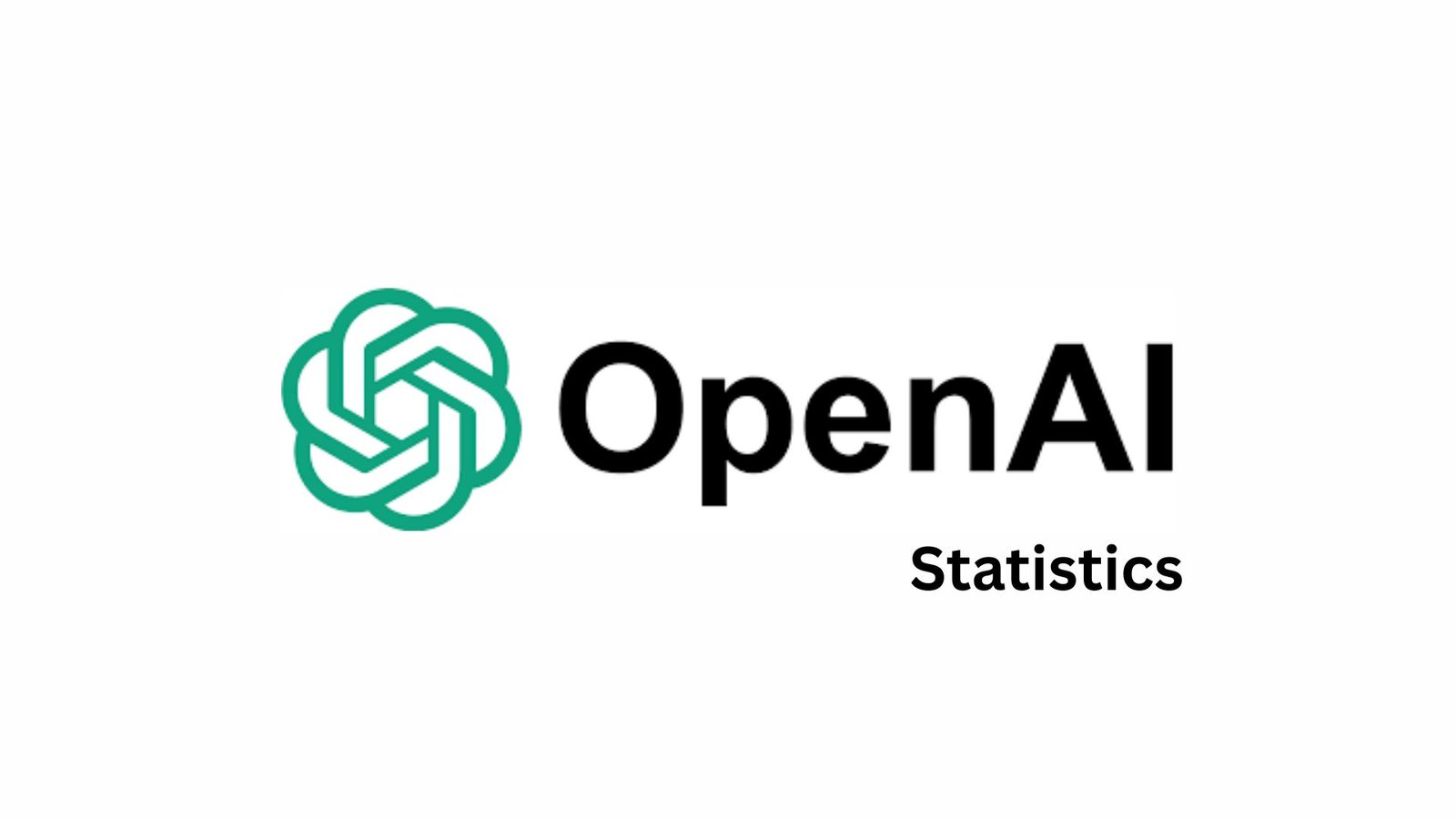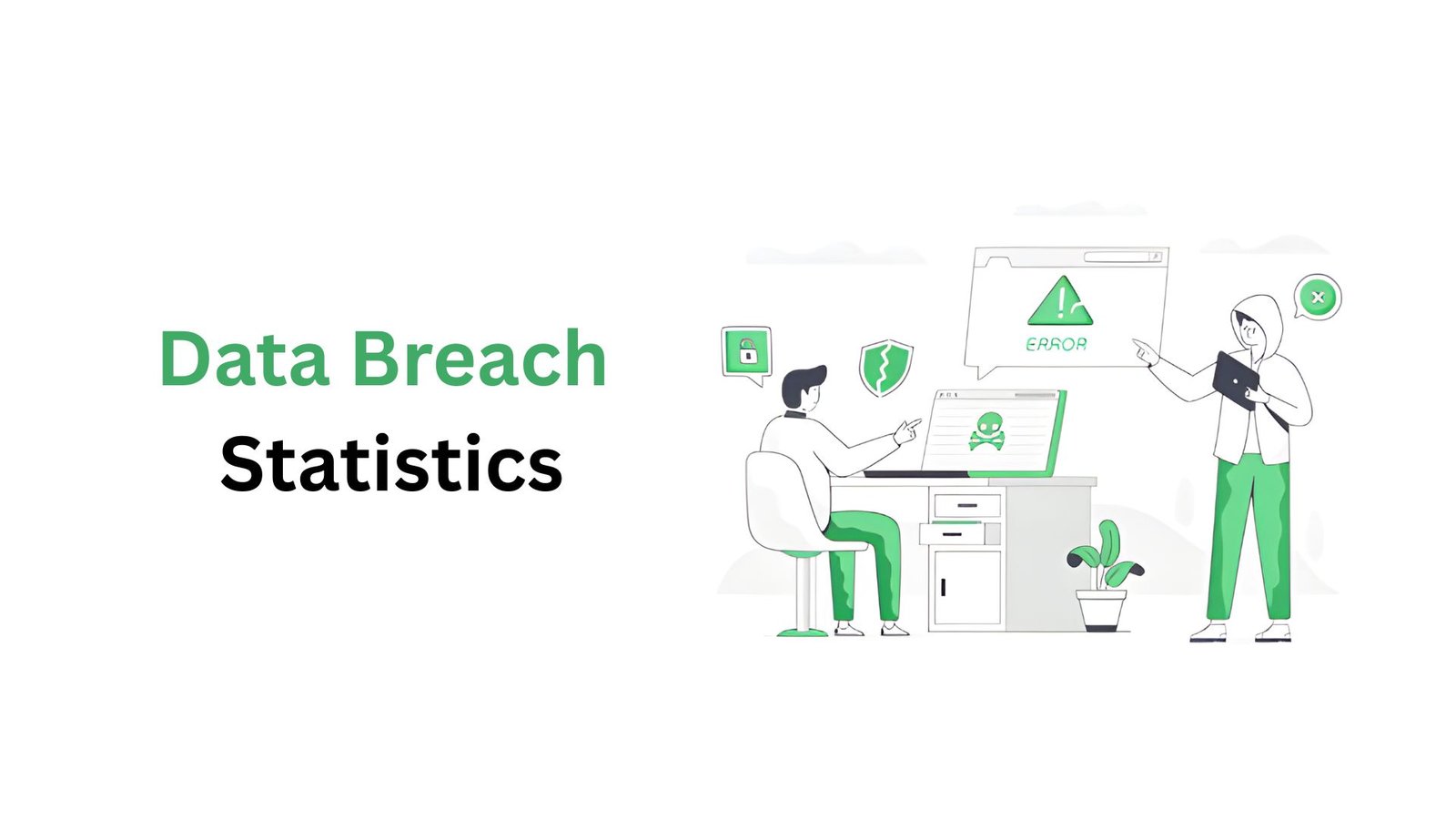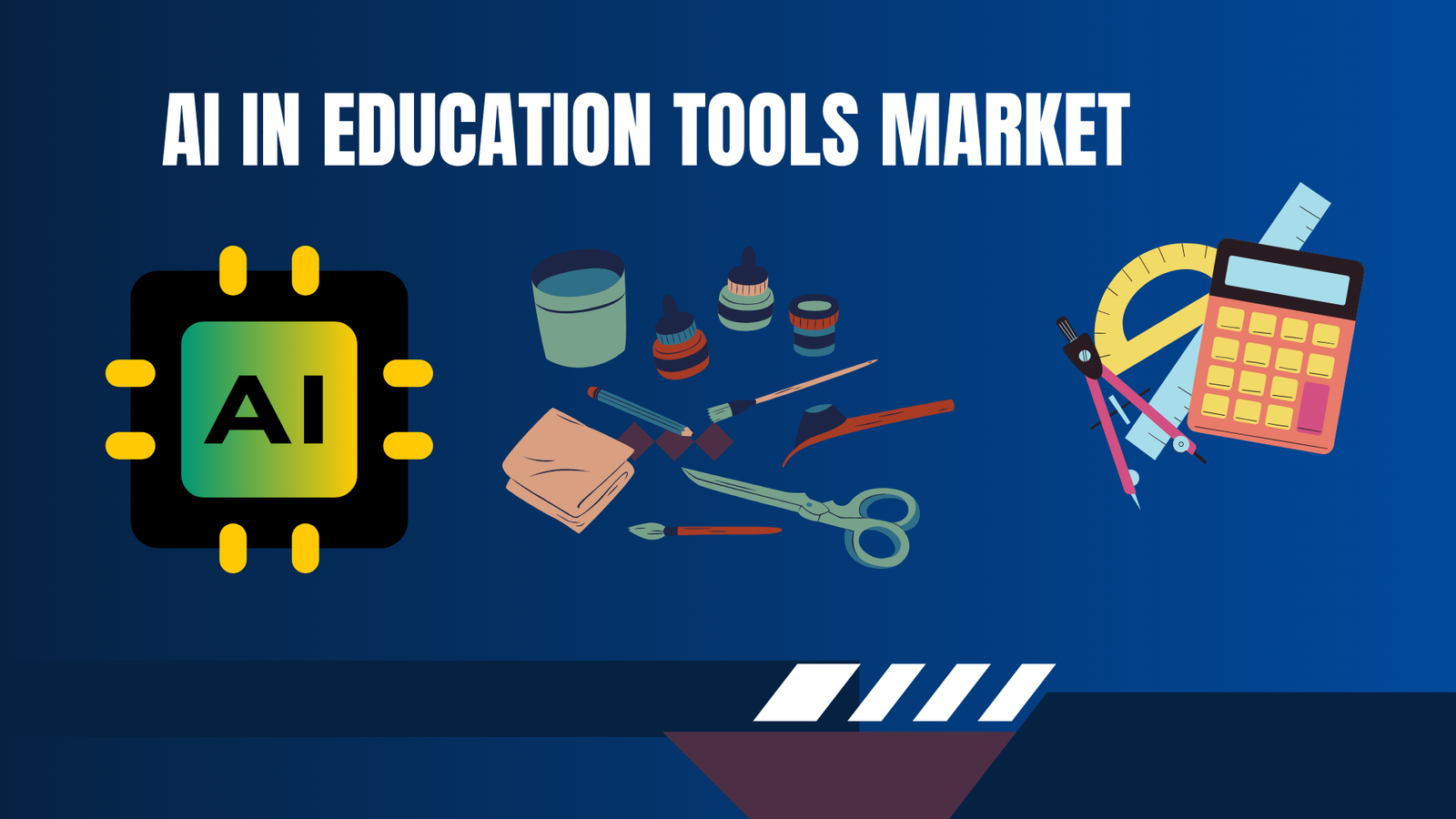AI Watermarking Market to hit USD 3,652.8 Million By 2034
Updated · Sep 30, 2025
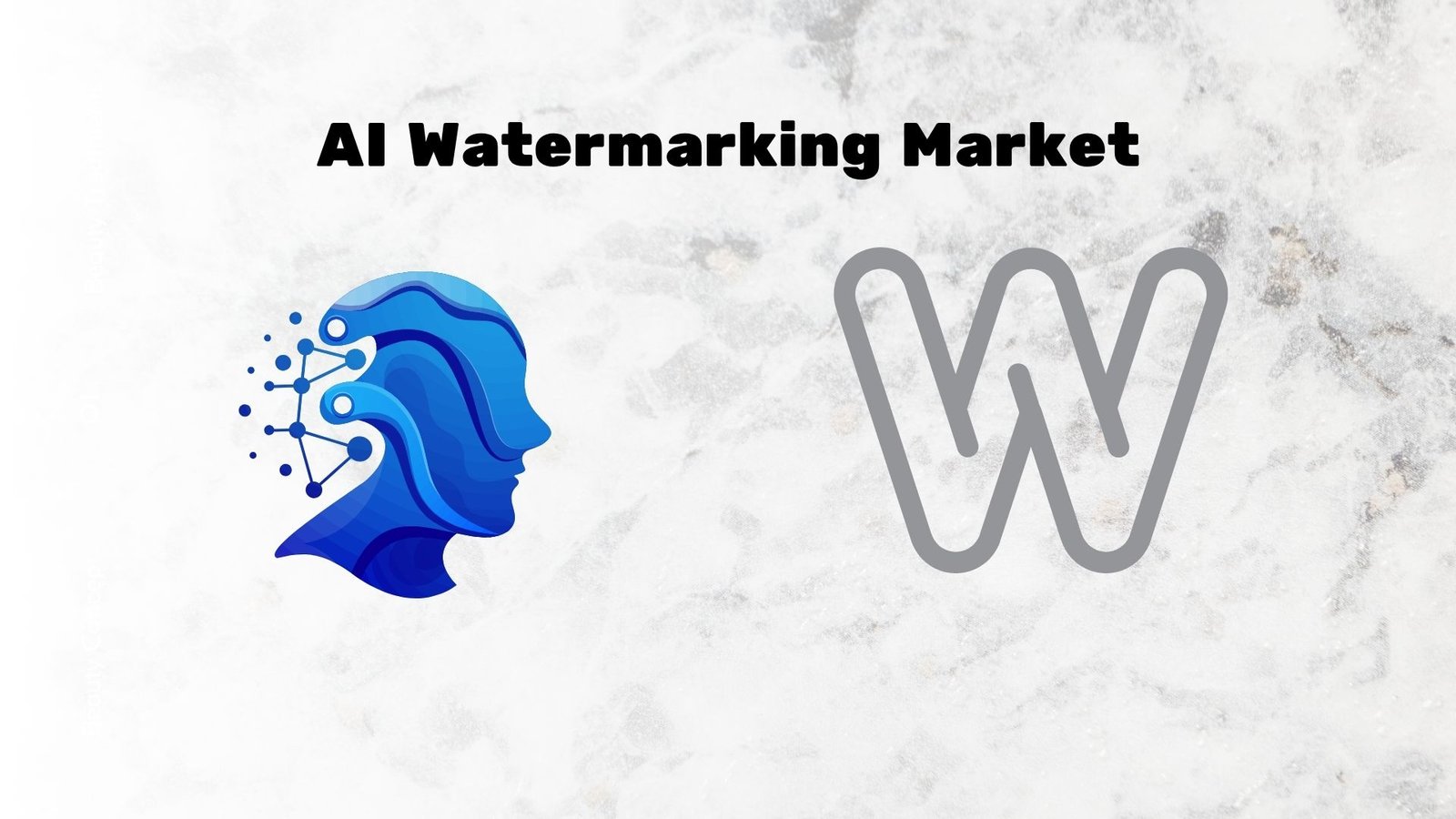
WHAT WE HAVE ON THIS PAGE
AI Watermarking Market Size
According to Market.us, The Global AI Watermarking Market is projected to reach USD 3,652.8 million by 2034, up from USD 580.2 million in 2024, reflecting a 20.2% CAGR between 2025 and 2034. In 2024, North America led the market with a share of over 37.7%, generating USD 218.7 million in revenue.
The AI Watermarking Market refers to a sector focused on embedding identifiable marks into digital content produced or manipulated by artificial intelligence. This includes watermarking images, videos, audio, text, and AI models themselves to prove authenticity, prevent unauthorized use, and trace content origin in digital environments. The technology often works invisibly, embedding signals detectable by algorithms but not visible to users. Its growth stems from a sharp rise in AI-generated content, concerns about deepfakes, misinformation, and the need to protect intellectual property and ensure regulatory compliance.
Top driving factors include the rapid increase in AI-generated multimedia across industries like media, entertainment, and social platforms, which makes authentication vital. The rise of deepfakes and misinformation has heightened the need for reliable verification. Governments and organizations are setting stricter guidelines that push for content provenance measures. Technological advancements such as invisible and hybrid watermarking techniques enhance security without compromising user experience. In 2024, North America held a strong market share with over 37% dominance, reflecting regional leadership driven by regulatory focus and cybersecurity priorities.
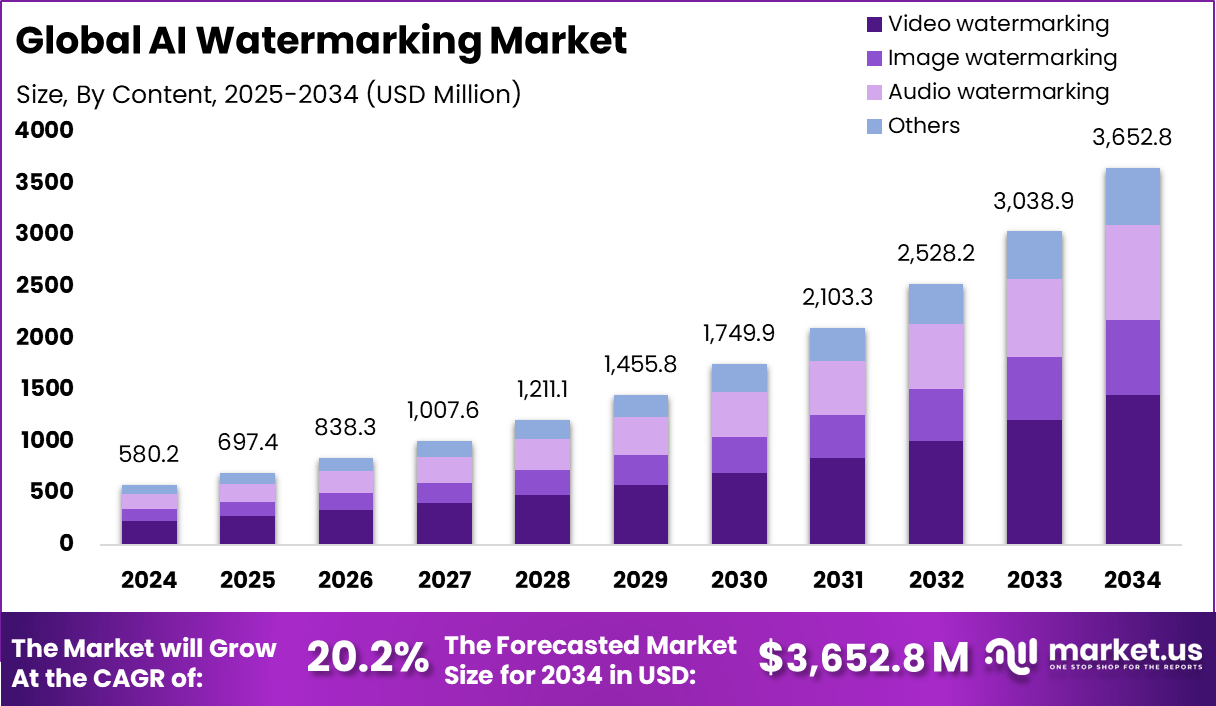
Key Insight Summary
- Invisible watermarking dominated with 57.6%, highlighting its secure and non-intrusive role in protecting digital content.
- On-premise deployment accounted for 65.6%, showing enterprises’ preference for direct control over sensitive assets.
- Video watermarking led with 39.8%, supported by rising video streaming and digital media distribution.
- Copyright protection applications held 39%, reflecting watermarking’s critical function in safeguarding intellectual property.
- Non-reversible watermarking captured 82.1%, ensuring permanent, tamper-proof authentication.
- Media & entertainment industry represented 37.9%, underlining its heavy reliance on watermarking to combat piracy.
- North America led with 37.7%, while the US market generated USD 601.9 million and is expanding at a strong CAGR of 21%, emphasizing rapid adoption across industries.
Analysts’ Viewpoint
Demand analysis reveals growing urgency in sectors faced with authenticity challenges. Enterprises require watermarking for traceability, tamper resistance, and compliance in digital content management. This is especially important in media and publishing where intellectual property protection is critical. Adoption is expanding across digital media, including streaming services and social media, where content volume grows exponentially.
AI watermarking integrates with cloud platforms and digital asset management systems, enabling scalable deployment. Notably, nearly 83% of companies now see AI as central to their strategy, which elevates watermarking as a key tool to secure AI outputs. Increasing adoption comes from advancements in AI-powered watermarking tools embedded directly into generative AI models and cloud services. The technologies widely used include invisible watermarking, which does not alter user experience, and non-reversible watermarking, adding permanent marks to verify ownership.
Providers like Google, Microsoft, and Adobe have released watermarking features for AI-generated images and text, increasing market confidence. Blockchain integration for tamper-proof tracking and real-time content monitoring are also emerging as powerful adoption drivers, offering enhanced provenance and user trust. Key reasons behind adopting AI watermarking are to combat misinformation, safeguard creators’ rights, and ensure content authenticity and trust across digital ecosystems.
Watermarks help social media and news platforms label AI-generated content clearly, reducing fake news spread. They provide creators proof of ownership and prevent unauthorized content reuse or manipulation. In legal and research contexts, watermark verification supports evidence integrity. Businesses benefit by minimizing legal and financial risks arising from copyright infringement or identity misuse, and by reinforcing brand credibility through enhanced content transparency.
Role of Generative AI
The role of generative AI in AI watermarking has become crucial as more AI-generated content floods digital channels. Generative AI models embed invisible signals within text, images, audio, and video to mark them as AI created. This technique has gained importance because it helps distinguish AI outputs from human-made content, which is essential for trust and transparency.
A recent study shows that around 4.8% of AI-related digital content now carries these invisible watermarks, marking a significant rise in adoption driven by the need to combat misinformation and deepfakes. By subtly influencing word choice or pixel-level details, generative AI watermarking creates a signature that specialized software detects without affecting content quality or readability.
Investment and Business benefits
Investment opportunities in the AI Watermarking Market arise from expanding generative AI usage, growing regulatory mandates requiring provenance, and advances in detection algorithms. Cloud-based watermarking solutions are attractive for scalable business models. Emerging regions like Asia Pacific show high growth potential due to digital economy initiatives and IP enforcement. Innovations in real-time monitoring, deep learning enhancements, and blockchain offer new product differentiation. Partnerships between AI developers, cybersecurity firms, and media platforms create fertile ground for investments aimed at securing digital content authenticity.
Business benefits include strong protection against copyright infringement, improved trust in digital content, and reduced financial/legal risks from unauthorized usage. Watermarking supports secure content distribution, deters tampering, and blocks the spread of fake content. Enterprises gain traceability and audit capabilities, which improves transparency in AI outputs. This transparency fosters consumer confidence and safeguards brand integrity, vital in sectors reliant on digital content authenticity for operational credibility and regulatory compliance.
The regulatory environment is increasingly important for AI watermarking adoption. Governments worldwide, including under frameworks like the 2024 EU AI Act and various US state laws, are pushing for mandatory watermarking of AI-generated content to ensure clear provenance and compliance. Standards such as C2PA (Coalition for Content Provenance and Authenticity) promote interoperability and reduce misinformation. However, regulatory heterogeneity and lack of global standardization pose challenges. Policymakers emphasize watermark verifiability and auditability, encouraging technical standards aligned with governance goals to ensure accountability and oversight.
Emerging trends
Emerging trends in AI watermarking highlight its integration directly into generative AI platforms and the use of blockchain to ensure tamper-proof tracking of watermarked content. The technology is evolving to include real-time monitoring systems that detect unauthorized redistribution across channels.
By 2025, this market sector saw a growth rate exceeding 25%, fueled by industries emphasizing content authenticity and intellectual property protection. Platforms generating text-to-image and text-to-video content especially are embedding watermarks natively, which strengthens digital content verification and supports compliance with increasing regulatory demands worldwide.
Growth factors
Growth factors supporting AI watermarking include the surge in AI-generated media, rising concerns over content authenticity, and the need for intellectual property safeguarding. Governments and private enterprises are investing heavily in these solutions to mitigate risks associated with manipulated and fake content. For example, regulatory environments like the European Union’s AI Act and various US state-level bills push companies to implement watermarking.
Technological advancements in invisible watermarking methods also allow seamless and effective deployment at scale. This has led to a compound annual growth rate of over 25% in recent years, reflecting strong demand for reliable authenticity tools across sectors such as media, finance, and government.
Key Market Segments
By Type
- Invisible watermarking
- Visible watermarking
- Hybrid
By Technology
- Reversible watermarking
- Non-reversible watermarking
By Deployment Mode
- On-premises
- Cloud
- Hybrid
By Content
- Video watermarking
- Image watermarking
- Audio watermarking
- Others
By Application
- Copyright protection
- Authentication & security
- Branding & marketing
- Others
By End Use
- BFSI
- Healthcare
- Media & entertainment
- Government & defense
- Retail & e-commerce
- Others
Top Key Players in the Market
- Adobe
- Company Overview
- Product Portfolio
- Financial Performance
- Recent Developments/Updates
- Strategic Overview
- SWOT Analysis
- Digimarc
- IMATAG
- Meta Platforms
- Microsoft
- NVIDIA
- OpenAI
- Verimatrix
- ZOO Digital
- Others
Note (*): Similar analysis will be provided for other companies as well.
Read More – https://market.us/report/ai-watermarking-market/

Barry loves technology and enjoys researching different tech topics in detail. He collects important statistics and facts to help others. Barry is especially interested in understanding software and writing content that shows its benefits. In his free time, he likes to try out new healthy recipes, practice yoga, meditate, or take nature walks with his child.






